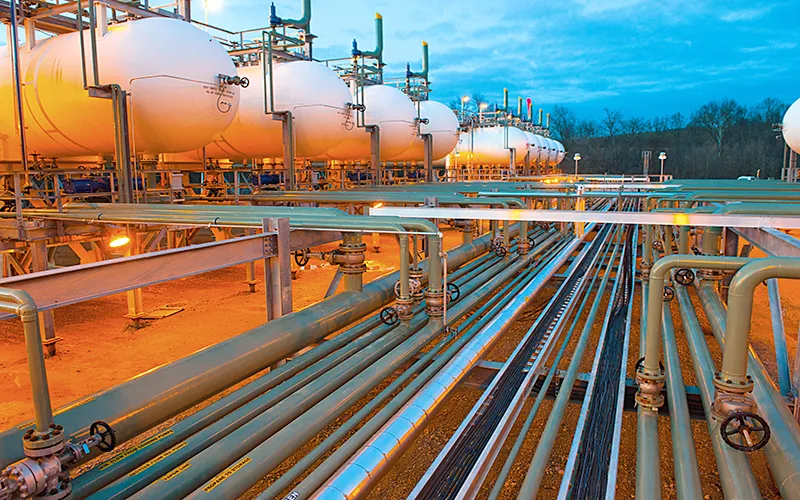The Iran-Pakistan-India (IPI) pipeline has been in the works for two decades, but has been repeatedly delayed due to geopolitical factors and logistical challenges. US' standoff with Iran over the latter's nuclear programme, and tensions between India and Pakistan, have cast a shadow over the project. However, recent progress in the P5+1 nuclear negotiations may provide a new opportunity to take this initiative forward.
A start may have already been made in this direction. Pakistan's Petroleum minister has confirmed that his country will be building its side of the pipeline, with the help of Chinese finance and technical expertise.
In light of these developments, India, which withdrew from the project in 2009, may want to reconsider its position on the IPI pipeline. As India's energy needs and the cost of importing natural gas continue to increase, so does the need for diversifying its sources.
However, even if the IPI is revived, it is likely to encounter familiar challenges - ambiguity over the durability and terms of the final nuclear agreement between Iran and the international community, security challenges in the region, and political differences between India and Pakistan.
'The peace pipeline'
The IPI was the result of a Memorandum of Understanding between India and Iran in 1993 for the construction of a natural gas pipeline that would connect Iran's South Pars field to India's natural gas network, via Pakistan. It was referred to in some quarter as the 'peace pipeline', as it was seen as a possible confidence-building measure between India and Pakistan. However, the hostile bilateral relations for most of the 1990s precluded the possibility of such cooperation. By 2004 these tensions eased, and both India and Pakistan sounded positive on the prospects of the pipeline. Despite the momentum, India ultimately pulled out of the project in 2009. Disagreements over pricing, security concerns and related insurance costs were cited as reasons by New Delhi for its withdrawal. With India's withdrawal, the pipeline has now become a bilateral project between Iran and Pakistan.
The Iran-US factor also derailed the project. The US opposition to the pipeline, and the Iran Sanctions Act (ISA) which triggers sanctions on all entities that invest more than $20 million in Iran's energy sector, discouraged both India and Pakistan from moving forward with this project. Iran had completed the 1,100 km of pipeline up till the border by the end of 2014, but Pakistan was unable to hold up its end of the bargain due to the US pressure.
Progress in the nuclear negotiations between Tehran and the international community may have provided an opening for Islamabad. Pakistan's Petroleum Minister claimed in January 2015 that the pipeline would be completed by 2017. The project received a further boost when a part of the US $46 billion of Chinese investments to Pakistan -- signed during President Xi Jinping's visit in April 2015 -- was earmarked for construction of the pipeline on Pakistan's side of the border.
Growing energy needs
The thaw in the Iran-US relations could possibly encourage India to increase its engagement with Iran as well. The signing of the MoU between India and Iran in May 2015 for the development of the Chabahar Port can be seen in this light. Whether increased engagement with Iran on the Chabahar Port can provide a template for reintegrating India into the IPI project remains to be seen. Despite no official indication from India to this effect, Pakistan's High Commissioner to Delhi recently said that the IPI "could be revived".
Considering India's vast energy needs and demand for natural gas, New Delhi should push to frame the natural gas pipeline as a trilateral project once more.In 2013-14, India produced about 74 million metric standard cubic meters per day (mmscmd) of natural gas domestically, well below the demand of 121.13 mmscmd. With the demand projected to rise to 378 mmscmd by 2016-17 and domestic production not expected to rise fast enough, India's need to augment its supplies of natural gas is clear. A failure to address this challenge will have a severe impact on India's economic growth. Fertiliser production - and consequently the agriculture sector - and power generation are likely to be the worst affected. The shortage of natural gas has left tens of power plants stranded, with around 14,000 MW of capacity going unused. This has resulted in losses of up to Rs. 30000 crores.
As of now, India's imports of natural gas are made up mostly of LNG (Liquefied Natural Gas), which is quite expensive. For instance, LNG imported from Qatar costs India about $13 per mm BTU. Moreover, power generation using LNG costs more than using piped natural gas. LNG terminals are difficult and expensive to build, one reason why India only has a handful of them. Shale gas has proven to be a boon to energy hungry economies elsewhere, but its viability is questionable if oil prices stay down. Moreover, the assessment of India's shale gas reserves is still in the very early stages, and commercial production remains several years off. In light of such constraints, there is a critical need for an initiative like IPI in India's natural gas market.
Although pricing was one of the issues that led to India's withdrawal from the IPI project, it should not be a deal-breaker. Gas from the IPI pipeline would cost $11 per mm BTU, and although this isn't cheap, it would still be less costly than the gas from the Turkmenistan-Afghanistan-Pakistan-India (TAPI) pipeline, not to mention imported LNG.
An important advantage of the IPI pipeline is that much of the groundwork has already been done. Iran's segment of the pipeline has been completed for over a year, and with Chinese technical support and finance, Pakistan's part of the pipeline is scheduled to be operational by 2017. The IPI Pipeline could provide between 60 to 90 mmscmd, so if it is constructed at the earliest, meaning within three years, it could supply between 15-25% of India's natural gas requirement.
Alternative sources of natural gas, such as a potential deep-sea pipeline from Oman, or a pipeline from Myanmar are much further from becoming a reality. The work on the Turkmenistan-Afghanistan-Pakistan-Iran (TAPI) gas pipeline is yet to begin. But TAPI should not be seen as an alternative to the IPI, but a complimentary project. Both will be needed, as domestic production will continue to fall short of demand.
Future challenges
Despite the importance of the pipeline, its geographical route poses challenges. Hundreds of kilometres of the pipeline would run through Baluchistan, where the ongoing insurgency has a history of sabotaging pipelines. Earlier this year, natural gas pipelines were bombed in two different districts in Baluchistan. Security concerns vis-a-vis the Afghanistan-Pakistan region have delayed a number of other projects in the region in which India has vital stakes such as the TAPI gas pipeline, and the Hajigak iron-ore mines in central Afghanistan.
Cooperation on such projects is always going to be contingent on the state of India-Pakistan relations. Tensions between the two countries have hampered trade ties and economic cooperation and continue to act as a roadblock to greater bilateral collaboration. However, this should not mean that economic and commercial cooperation between the two countries is not possible.
The TAPI pipeline, for instance, can be taken as a reference point. Despite their differences and, divergent interests with respect to Afghanistan, both India and Pakistan have managed to remain engaged on this project. A meeting held in March this year had ended positively. Any success with the TAPI pipeline could provide a framework for further collaboration between the two countries. In particular, it provides a foundation for energy collaboration between India and Pakistan. This was an area of cooperation that had been identified by Pakistan at the time of Nawaz Sharif's swearing in as Prime Minister in May 2013 and had also sent a team to India to explore the potential for bilateral energy cooperation. India, for its part, had also shown some willingness to supply regasified LNG to Pakistan via a new pipeline in 2014.
The Iran-US nuclear angle could still be a possible obstacle with a final deal still a few weeks away. A disgruntled US Congress is arguing that it should be able to have its say on any agreement with Iran, which could upset matters even if negotiators are successful. Moreover, the US is due for a Presidential election next year. The results may have a very significant impact on how rapidly the US intends to dismantle the sanctions architecture it has constructed around Iran, or indeed whether or not it backtracks on the policy of engagement. Considerable scepticism exists on the Iranian side as well, with senior figures adamant that military sites will not be open to inspection, a requirement demanded by the US. Such political uncertainties still cast a doubt over the prospects of the IPI pipeline, because the position that the US takes will surely have an impact on India's decision-making.
The way forward
The present momentum behind Iran's nuclear negotiations is still a good sign for the IPI pipeline. The chance of sanctions on Iran being lifted provides a better outlook than in the previous years even though security and geopolitical uncertainties remain.
The factors preventing India from participating in the IPI pipeline are primarily political and strategic in nature and there are steps India can take to address these problems. Any deal it negotiates on the IPI pipeline must incorporate the security risks that it entails. Disruption of supply should automatically trigger withholding of transit fee payment to Pakistan as well as financial penalties. The magnitude of disruption can also be reduced by holding extensive reserves on India's end of the pipeline. Moreover, New Delhi has shown signs in recent months of being open, once again, to engaging with Pakistan, and as negotiations over the TAPI pipeline have shown, it is possible for India and Pakistan to cooperate on multilateral projects.
With regards to the Iran-US factor, India can only wait and watch. If negotiations are successful and US-Iran relations undergo a partial thaw, the circumstances would be beneficial for the IPI. A failure on this front will make it difficult once again, not only for India but also for Pakistan, to move ahead with this project. However, India can still seek to leverage its closer relations with the US to waive the application of the ISA from the IPI. This has been done before for the United States' European allies, and India could consider offering concessions elsewhere in exchange for such a waiver.
Despite the various challenges ahead, India should seek to reopen dialogue on this important project, which could go far in supporting India's energy and regional security interests.
(The writer is a Research Intern at Observer Research Foundation)
The views expressed above belong to the author(s). ORF research and analyses now available on Telegram! Click here to access our curated content — blogs, longforms and interviews.




 PREV
PREV

